15 Cognitive Development in Middle Childhood
Chapter Objectives
After this chapter, you should be able to:
- Explain how cognitive theorists describe children’s cognitive development and thinking in the middle years.
- Explain how intelligence is measured, the tests used to assess intelligence, the extremes in intelligence, and the concern of bias
- Describe the Information Processing Theory
INTRODUCTION
During middle and late childhood, children continue to explore their world with purpose. Cognitive skills continue to develop with an increasing ability to make inquiries, problem solve, classify information and data and make representations that support children to make sense of, and describe, the world and their experiences. In this period of development, they begin to ‘think about thinking‘ referred to as metacognition and evaluate what they already know and what they still have to learn.
Thought processes that become more logical and organized when dealing with concrete and increasingly more abstract information. Children at this age understand concepts such as past, present, and future, giving them the ability to plan and work toward goals. Additionally, they can process complex ideas such as addition and subtraction and cause-and-effect relationship.
For most children, school becomes a context for development and where their abilities are assessed and reported on. Throughout childhood and beyond there are many factors which influence an individual’s overall cognitive development. These include their socioeconomic status, parenting, their lived experiences and individual differences in cognitive process, and these differences predict both their readiness for school, academic performance, and testing in school (Prebler, Krajewski, & Hasselhorn, 2013, as cited in Paris, Ricardo, Raymond, & Johnson, 2021).
The Continuum of Development describes a number of skills pertaining to children’s cognitive development domain during middle childhood. These include an increasing ability to self-regulate, an interest in games with rules and further development of mathematical skills such as describing patterns, spatial reasoning, creating and using maps (Ontario Ministry of Education, 2014).
cognitive theories of intelligence
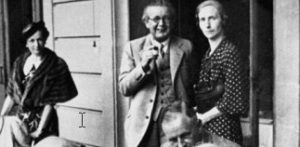
Figure 15.1: Jean Piaget (image is in the public domain)
Theorists are able to give different perspectives to the cognitive development of children and psychologists have long debated how to best conceptualize and measure intelligence (Sternberg, 2003, as cited in Paris, Ricardo, Raymond, & Johnson, 2021). In the next section, we’ll look at Piaget’s theory of cognitive development, Sternberg’s alternative view to intelligence, and Gardener’s theory of multiple intelligence. Lastly, you’ll learn about the Information Processing Theory that looks at the cognitive function of children in middle childhood.
Piaget’s Theory of Cognitive Development
Cognitive Operational Thought
As children continue into elementary school, they develop the ability to represent ideas and events with more logic and flexibility. Piaget called this period the concrete operational stage because children mentally “operate” on concrete objects and events.
The concrete operational stage is defined as the third in Piaget’s theory of cognitive development. This stage takes place around 7 years old to 11 years of age and is characterized by the development of organized and rational thinking. Piaget (1954a, as cited in Paris, Ricardo, Raymond, & Johnson, 2021) considered the concrete stage a major turning point in the child’s cognitive development, because it marks the beginning of logical or operational thought. The child is now mature enough to use logical thought or operations (i.e. rules) but can only apply logic to physical objects (hence concrete operational). Children gain the abilities of conservation (number, area, volume, orientation) and reversibility (Lally & Valentine-French, 2019).
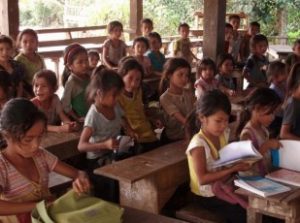
Figure 15.2: Children studying (Image is licensed under CC0)
These skills allow children to solve problems more systematically than before, and therefore to be successful with many academic tasks. In the concrete operational stage, for example, a child may unconsciously follow the rule: “If nothing is added or taken away, then the amount of something stays the same.”
Let’s look at the following cognitive skills that children typically master during Piaget’s concrete operational stage 6:
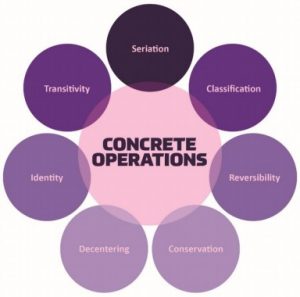
Figure 15.3: The cognitive skills developed during the concrete operational stage. (Image by Ian Joslin is licensed under CC-BY 4.0)
Seriation: Arranging items along a quantitative dimension, such as length or weight, in a methodical way is now demonstrated by the concrete operational child. For example, they can methodically arrange a series of different-sized sticks in order by length, while younger children approach a similar task in a haphazard way (Lally & Valentine-French, 2019).

Figure 15.4: Putting these rectangles from smallest to largest is seriation. (Image by MehreenH is licensed CC BY-SA 4.0)
Classification: As children gain more experiences and their vocabularies expand, they build schema and can recognize and perhaps describe attributes and organize objects in many different ways. They also understand classification hierarchies and can arrange objects into a variety of classes and subclasses.
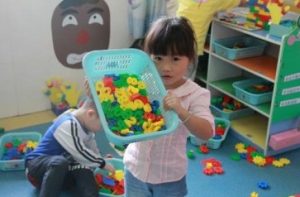
Figure 15.5: This child might use classification if they sort these toys by colour. (Image is licensed under CC0)

Figure 15.6: Understanding that ice cubes melt is an example of reversibility. (Image by John Voo is licensed under CC-BY 2.0)
Reversibility: The child learns that some things that have been changed can be returned to their original state. Water can be frozen and then thawed to become liquid again. But eggs cannot be unscrambled. Arithmetic operations are reversible as well: 2 + 3 = 5 and 5 – 3 = 2. School curricula around the world reflects children’s developing cognitive skills and educators are encouraged to provide opportunities for children to explore and demonstrate these new skills and increased awareness.
Conservation: In the chapter describing Piaget’s pre-operational stage of cognitive development, you learned that a child in this stage would believe that if you were to fill a tall beaker with 8 ounces of water they would think that it was “more” than a short, wide bowl filled with 8 ounces of water. Children in the Concrete operational stage can understand the concept of conservation, which means that changing one attribute (in this example, height or water level) can be compensated for by changes in another attribute (width). Consequently, there is the same amount (conserved) of water in each container, although one is taller and narrower and the other is shorter and wider. Children in the pre operational stage may look at the attribute of height or depth and believe that the taller container has more water (depth) .
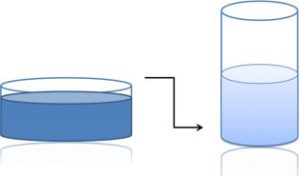
Figure 15.7: Beakers displaying the idea of conservation. (Image by Ydolem2689 is licensed under CC BY-SA 3.0)
Decentration: Children in the concrete operational stage of development children no longer focus on only one dimension or attribute of any object (such as the height of the glass) and instead consider the changes in other dimensions and attributes also (such as the width of the glass). This allows for conservation to occur.

Figure 15.8: Children looking at these glasses demonstrate decentration when looking at more than one attribute i.e. tall, short, and wide narrow. (Image by Waterlily16 is licensed under CC by-SA 3.0)
Identity: One feature of concrete operational thought is the understanding that objects have qualities or attributes that do not change even if the object is altered in some way. For instance, mass of an object does not change by rearranging it. A piece of chalk is still chalk even when the piece is broken in two (Lally & Valentine-French, 2019).



Figure 15.9: A broken egg is still an egg (Image bu John Liu is licensed under CC-BY 2.0)
Figure 15.10: A deflated balloon is still a balloon. (Image is licensed under CC0)
Figure 15.11: Broken chalk is still chalk. (Image from Pexels)
Transitivity: This refers to the ability to understand how objects are related to one another is referred to as transitivity or transitive inference. This means that if one understands that a dog is a mammal and that a boxer is a dog, then a boxer must be a mammal.

Figure 15.12- Transitivity allows children to understand that the boxer puppy is a dog and a mammal. (Image by Martin Vorel is in the public domain)
Intelligence Tests and Those Who Created Them
Piaget described human cognition as developing in distinct and somewhat discontinuous stages while other researchers (e.g. Sternberg 1997; 1999, as cited in Paris, Ricardo, Raymond, & Johnson, 2021) describe cognitive development as more continuous in nature. In this section we will examine some views of human intelligence.
Alfred Binet & Théodore Simon – Stanford- Binet Intelligence Test
From 1904- 1905 the French psychologist Alfred Binet (1857–1914) and their colleague Théodore Simon (1872–1961) began working on behalf of the French government to develop a measure that would identify children who would not be successful with the regular school curriculum. The goal was to help teachers better educate these students (Aiken, 1994, as cited in Paris, Ricardo, Raymond, & Johnson, 2021).
Binet and Simon developed what most psychologists today regard as the first intelligence test, which consisted of a wide variety of questions that included the ability to name objects, define words, draw pictures, complete sentences, compare items, and construct sentences. Binet and Simon (Binet, Simon, & Town, 1915; Siegler, 1992, as cited in Paris, Ricardo, Raymond, & Johnson, 2021) believed that the questions they asked the children all assessed the basic abilities to understand, reason, and make judgments.
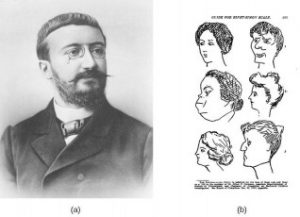 Figure 15.13: Alfred Binet (Image is in the public domain)
Figure 15.13: Alfred Binet (Image is in the public domain)
Figure 15.14: This page is from a 1908 version of the Binet-Simon Intelligence Scale. Children being tested were asked which face, of each pair, was prettier. (Image is in the public domain)
Soon after Binet and Simon introduced their test, the American psychologist Lewis Terman at Stanford University (1877–1956) developed an American version of Binet’s test that became known as the Stanford- Binet Intelligence Test. The Stanford-Binet is a measure of general intelligence made up of a wide variety of tasks including vocabulary, memory for pictures, naming of familiar objects, repeating sentences, and following commands.
David Wechsler- Wechsler-Bellevue Intelligence Scale
In 1939, David Wechsler, a psychologist who spent part of their career working with World War I veterans, developed a new IQ test in the United States. Wechsler combined several subtests from other intelligence tests used between 1880 and World War I. These subtests tapped into a variety of verbal and nonverbal skills because Wechsler believed that intelligence encompassed “the global capacity of a person to act purposefully, to think rationally, and to deal effectively with their environment” (Wechsler, 1958, p. 7, as cited in Paris, Ricardo, Raymond, & Johnson, 2021). The test was named the Wechsler-Bellevue Intelligence Scale (Wechsler, 1981, as cited in Paris, Ricardo, Raymond, & Johnson, 2021). This combination of subtests became one of the most extensively used intelligence tests in the history of psychology.

Figure 15.15: David Wechsler (Image by Comet Photo AG (Zurich) is licensed under CC BY-SA 4.0)
Today, there are three intelligence tests credited to Wechsler, the Wechsler Adult Intelligence Scale-fourth edition (WAIS-IV), the Wechsler Intelligence Scale for Children (WISC-V), and the Wechsler Preschool and Primary Scale of Intelligence—Revised (WPPSI-III) (Wechsler, 2002, as cited in Paris, Ricardo, Raymond, & Johnson, 2021).
Bias of IQ Testing
Intelligence tests and psychological definitions of intelligence have been heavily criticized since the 1970s for being biased in favor of Anglo-American, middle-class respondents and for being inadequate tools for measuring non-academic types of intelligence or talent. Intelligence changes with experience, and intelligence quotients or scores do not reflect that ability to change. What is considered smart varies culturally as well, and most intelligence tests do not take this variation into account. For example, in the West, being smart is associated with being quick. A person who answers a question the fastest is seen as the smartest, but in some cultures being smart is associated with considering an idea thoroughly before giving an answer. In these cultures, a well-thought out, contemplative answer is the best answer (Lally & Valentine-French, 2019). This view is also seen in Indigenous cultures were children are taught to be mindful about the words being used before answering a question.
A Spectrum of Intellectual Development
The results of studies assessing the measurement of intelligence show that IQ is distributed in the population in the form of a Normal Distribution (or bell curve), which is the pattern of scores usually observed in a variable that clusters around its average. In a normal distribution, the bulk of the scores fall toward the middle, with many fewer scores falling at the extremes. The normal distribution of intelligence shows that on IQ tests, as well as on most other measures, the majority of people cluster around the average (in this case, where IQ = 100), (see below).
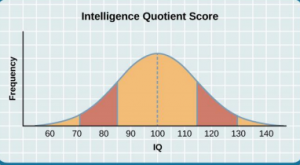
Figure 15.16: The majority if people have an IQ score between 85 & 115. (Image by CNX Psychology is licensed under CC BY 4.0)
Distribution of IQ Scores in the General Population
The normal distribution of IQ scores in the general population shows that most people have about average intelligence, while very few have extremely high or extremely low intelligence (Lally & Valentine-French, 2019).
This means that about 2% of people score above an IQ of 130, often considered the threshold for giftedness, and about the same percentage score below an IQ of 70, often being considered the threshold for an intellectual disability.
Triarchic Theory of Intelligence
An alternative view of intelligence is presented by Sternberg (1997; 1999, as cited in Paris, Ricardo, Raymond, & Johnson, 2021). Sternberg offers three types of intelligences. Sternberg provided background information about their view of intelligence in a conference, where they described their frustration as a committee member charged with selecting graduate students for a program in psychology. Sternberg was concerned that there was too much emphasis placed on aptitude test scores (we will discuss this later in the chapter) and believed that there were other, less easily measured, qualities necessary for success in a graduate program and in the world of work.
These include:
1. Analytical (componential) sometimes described as academic: includes the ability to solve problems of logic, verbal comprehension, vocabulary, and spatial abilities
2. Creative (experiential): the ability to apply newly found skills to novel situations
3. Practical (contextual): the ability to use common sense and to know what is called for in a situation



Figure 15.17: Reading supports analytical intelligence (Image licensed under CC0)
Figure 15.18: Building with lego shows creative intelligence (Image licensed under CC0)
Figure 15.19: Navigating social settings is practical intelligence (Image by Steven Depolo is licensed under CC BY 2.0)
Howard Gardner’s Theory of Multiple Intelligences

Figure 15.20: Howard Gardner. (Image by Interaction-Design.org is licensed under CC BY-SA 2.0)
Another champion of the idea of specific types of intelligences rather than one overall intelligence is the psychologist Howard Gardner (1983, 1999, as cited in Paris, Ricardo, Raymond, & Johnson, 2021). In the book Frames of Mind published in 1983, Gardner argued that it would be evolutionarily functional for different people to have different talents and skills, and proposed that there are nine intelligences that can be differentiated from each other.
Gardner contends that these are also forms of intelligence. A high IQ does not always ensure success in life or necessarily indicate that a person has common sense, good interpersonal skills, or other abilities important for success. Gardner investigated intelligences by focusing on children who were talented in one or more areas. In Gardner’s original work, he identified 7 intelligences based on other criteria including a set developmental history and psychometric findings . Gardner’s research demonstrated that in most individuals, two or the seven types of intelligence are dominant. (Lally & Valentine-French, 2019).
In 1995, Gardner added an eighth intelligence: naturalistic intelligence. In 2020, he added a ninth intelligence: existential intelligence. Descriptions of the nine intelligences are in the chart below.
Many inventories have been developed to describe an individual’s Multiple Intelligences profile. These inventories can be used to determine which two types of intelligence are dominant in an individual, however, developing all nine intelligences is encouraged. There are many Multiple Intelligence inventories that can be accessed for free online. If you have never completed one, take a few moments to do so. The results may surprise you!
Table 15.1 Howard Gardner’s Multiple Intelligences
| Intelligence | Description |
| Linguistic | The ability to speak and write well |
| Logical-mathematical | The ability to use logic and mathematical skills to solve problems |
| Spatial | The ability to think and reason about objects in three dimensions |
| Musical | The ability to perform and enjoy music |
| Kinesthetic (body) | The ability to move the body in sports, dance, or other physical activities |
| Interpersonal | The ability to understand and interact effectively with others |
| Intrapersonal | The ability to have insight into the self |
| Naturalistic | The ability to recognize, identify, and understand animals, plants, and other living things |
| Existential | The ability to understand and have concern from life’s larger questions, the meaning of life, and other spiritual matters |
Table 15.1- Howard Gardner’s Multiple Intelligences (Lifespan Development: A Psychological Perspective by Martha Lally and Suzanne Valentine-French is licensed under CC BY-NC-SA 3.0; Table adapted from Gardner, H. (1999). Intelligence reframed: Multiple intelligence
Let’s consider how Gardner’s theory of multiple intelligences helps early childhood educators support children’s holistic development and work with families as partners. It is an expectation that educators observe children’s play and interests to co plan learning opportunities and environments that align with the vision described in How Does Learning Happen? Being aware of Gardner’s nine types of intelligence facilitates educators to offer a broad range of opportunities for children. Opportunities which embrace the nine types of intelligence support all children’s development and well-being. Some children will be engaged because the opportunity recognizes one of their dominant intelligences while others may be curious to explore an opportunity that supports an intelligence that may not be dominant for them. This practice also reflects Loris Malaguzzi’s concept “One Hundred Languages of Children”. Loris Mallaguzzi (1920-1994) was the founder of the Reggio Emilia Approach. They believed that there are multiple ways that children can express their ideas, thoughts and feelings.
The concept of multiple intelligences has been influential in the field of formal education and where teachers have used Gardner’s theory to differentiate instruction for individual students. Multiple intelligence theory (Gardner, 1983, as cited in Paris, Ricardo, Raymond, & Johnson, 2021) can be considered in three main areas: the manner in which a lesson is presented, the tasks assigned to students and the way students can demonstrate their understanding (assessment). For instance, to teach math problems to students who have particularly good a high degree of kinesthetic intelligence, a teacher might encourage the students to move their bodies or hands according to the numbers (Lally & Valentine-French, 2019).
Gardner’s theory of Multiple Intelligences has been critiqued by some who argue that these “intelligences” sometimes seem more like “abilities” or “talents” rather than real intelligence, however, an awareness of this theory can support teaching, learning and holistic development.
Intelligence Testing – The What, the Why, and the Who
Measuring Intelligence: Standardization and the Intelligence Quotient
The goal of most intelligence tests is to measure “g”, the general intelligence factor. Good intelligence tests are reliable, meaning that they are consistent over time, and also demonstrate validity, meaning that they actually measure intelligence rather than something else. Over time, psychologists have invested substantial effort in creating and improving measures of intelligence.
Understanding intelligence requires that we know the norms or standards in a given population of people at a given age. The standardization of a test involves administering the test to a large population at different ages and computing the average score on the test at each age level.
Once the standardization has been achieved, we have a picture of the average abilities of people at different ages and can calculate a person’s mental age, which is the age at which a person is performing intellectually. If we compare the mental age of a person to the person’s chronological age, the result is the Intelligence Quotient (IQ), a measure of intelligence that is adjusted for age. A simple way to calculate IQ is by using the following formula:
IQ = mental age ÷ chronological age × 100.
Thus a 10-year-old child who does as well as the average 10-year-old child has an IQ of 100 (10 ÷ 10 × 100), whereas an 8-year-old child who does as well as the average 10-year-old child would have an IQ of 125 (10 ÷ 8 × 100). Most modern intelligence tests are based on the relative position of a person’s score among people of the same age, rather than on the basis of this formula, but the idea of intelligence “ratio” or “quotient” provides a good description of the score’s meaning.
The Flynn Effect
It is important that intelligence tests be standardized on a regular basis, because the overall level of intelligence in a population may change over time. The Flynn Effect refers to the observation that scores on intelligence tests worldwide have increased substantially over the past decades (Flynn, 1999, as cited in Paris, Ricardo, Raymond, & Johnson, 2021). Although the increase varies somewhat from country to country, the average increase is about 3 IQ points every 10 years. There are many explanations for the Flynn Effect including better nutrition, increased access to information, and more familiarity with multiple-choice tests (Neisser, 1998, as cited in Paris, Ricardo, Raymond, & Johnson, 2021). But whether people are actually getting smarter is debatable (Neisser, 1997, as cited in Paris, Ricardo, Raymond, & Johnson, 2021).
The value of IQ testing
The value of IQ testing is most evident in educational or clinical settings. Children who seem to be experiencing learning difficulties or severe behavioural problems can be tested to ascertain whether their difficulties can be partly attributed to an IQ score that is significantly different from the mean for their age group. Without IQ testing—or another measure of intelligence—children and adults needing extra support might not be identified effectively. Cognitive assessments can be used to identify such exceptionalities as cognitive impairments, learning disabilities and academic giftedness. The results of assessments can be used to develop an Individualized Education Plan (IEP) to support a student’s learning and success. School boards across the province have a responsibility to meet the provincial standards around IEPs. This often includes creating “Identification, Placement and Review Committees” (IPRC) to support the success of students with exceptionalities (Ontario Ministry of Education, 2007).
Intellectual Exceptionalities
One end of the distribution of intelligence scores is defined by people with very low IQ. Intellectual disability (or intellectual developmental disorder) is assessed based on cognitive capacity (IQ) and adaptive functioning. The severity of the disability is based on adaptive functioning, or how well the person handles everyday life tasks. One example of an intellectual developmental disorder is Down syndrome (also known as Trisomy 21), a chromosomal disorder caused by the presence of all or part of an extra 21st chromosome. The incidence of Down syndrome is estimated at approximately 1 per 700 births, and the prevalence increases as the mother’s age increases (Centre for Disease Control and Prevention, 2014, as cited in Paris, Ricardo, Raymond, & Johnson, 2021). People with Down syndrome typically exhibit a distinctive pattern of physical features, including a flat nose, upwardly slanted eye, a protruding tongue, and a short neck.
A particular vulnerability of people with low IQ is that they may be taken advantage of by others, and this is an important aspect of the definition of intellectual developmental disorder (Greenspan, Loughlin, & Black, 2001, as cited in Paris, Ricardo, Raymond, & Johnson, 2021).

Figure 15.21: Down syndrome is caused by the presence of all or part of an extra 21st chromosome. (Image by Vanellus Foto is Licensed under CC BY-SA)
testing in schools
Children’s academic performance is often measured with the use of standardized tests.

Figure 15.22: Standardized test are used to measure academic performance. (Image by Marine Coprps Base Hawaii is in the public domain)
In Ontario, the Education Quality and Accountability Office (EQAO) (2020) evaluates how well Ontario’s public education system is developing children’s reading writing and mathematical skills. The agency is an arm’s length government agency that co-ordinates Ontario’s participation in national and international assessments. Each student who writes an assessment is provided with individualized feedback to support learning and schools and school boards receive detailed information about their students’ achievement to inform school planning and instructional improvement. The overall results for each school are made public to keep publicly funded schools accountable to the public.
Through EQAO’s standardized tests, students’ language and math skills are assessed in grades 3 and 6. Mathematic skills are tested in grade 9 and literacy skills are tested in grade 10. It is important to remember that these tests are more about evaluating education than about individual children. Test scores have no impact on a student’s report card, with the exception of the standardized Ontario Secondary School Literacy Test which must be passed (or substituted with a literacy course) in order to graduate from high school (EQAO, 2020).
Annually the results of the standardized test influence research in education and the professional learning opportunities offered to educators with the goal of improving the rankings and student success (EQAO, 2020).
Information Processing – Learning, Memory and Problem Solving
During middle and late childhood children make strides in several areas of cognitive function including the capacity of working memory, their ability to pay attention, and their use of memory strategies. Both changes in the brain and experience foster these abilities. In this section, we will look at how children process information, think and learn, allowing them to increase their ability to learn and remember due to an improvement in the ways they attend to, store information, and problem solve (Lally & Valentine-French, 2019).
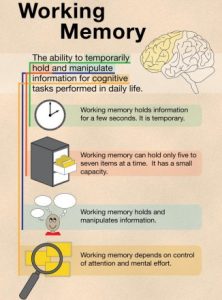
Figure 15.23: Working memory expands during middle and late childhood. (Image by Anchor is licensed under CC BY-NC-SA)
Working Memory: Research has suggested that both an increase in processing speed and the ability to inhibit irrelevant information from entering memory are contributing to the greater efficiency of working memory during this age (de Ribaupierre, 2002, as cited in Paris, Ricardo, Raymond, & Johnson, 2021). Changes in myelination and synaptic pruning in the cortex are likely behind the increase in processing speed and ability to filter out irrelevant stimuli (Kail, McBride-Chang, Ferrer, Cho, & Shu, 2013, as cited in Paris, Ricardo, Raymond, & Johnson, 2021).
Attention: As noted above, the ability to inhibit irrelevant information improves during this stage of development with a sharp improvement in selective attention from age six into adolescence (Vakil, Blachstein, Sheinman, & Greenstein, 2009, as cited in Paris, Ricardo, Raymond, & Johnson, 2021). Children also improve in their ability to shift their attention between tasks or different features of a task (Carlson, Zelazo, & Faja, 2013, as cited in Paris, Ricardo, Raymond, & Johnson, 2021). A younger child who is asked to sort objects into piles based on the type of object, car versus animal, or color of the object, red versus blue, would likely have no trouble doing so. But if you ask them to switch from sorting based on type to now having them sort based on color, they would struggle because this requires them to suppress the prior sorting rule. An older child has less difficulty making the switch, meaning there is greater flexibility in their attentional skills. These changes in attention and working memory contribute to children having more strategic approaches to challenging tasks.
Memory Strategies: Bjorklund (2005, as cited in Paris, Ricardo, Raymond, & Johnson, 2021) describes a developmental progression in the acquisition and use of memory strategies as children progress through elementary school. Examples of memory strategies include rehearsing information you wish to recall, visualizing and organizing information, creating rhymes, such as “i” before “e” except after “c”, or inventing acronyms, or pneumonic device such as “roygbiv” to remember the colors of the rainbow. In a longitudinal study Schneider, Kron-Sperl, and Hünnerkopf (2009, as cited in Paris, Ricardo, Raymond, & Johnson, 2021) reported a steady increase in the use of memory strategies from ages six to ten. Moreover, by age ten many children were using two or more memory strategies to help them recall information. Schneider and colleagues found that there were considerable individual differences at each age in the use of strategies and that children who utilized more strategies had better memory performance than their same-aged peers.
cognitive processes

Figure 15.24: As children learn more about the world, their knowledge base grows. (Image is licensed under CC0)
As children enter school and learn more about the world, their knowledge base expands, and becomes more refined as they develop more categories for concepts (Berger, 2014, as cited in Paris, Ricardo, Raymond, & Johnson, 2021). They learn more efficient strategies for storing and retrieving information.
Metacognition: As mentioned earlier, this refers to the knowledge we have about our own thinking and our ability to use this awareness to regulate our own cognitive processes (Bruning, Schraw, Norby, & Ronning, 2004, as cited in Paris, Ricardo, Raymond, & Johnson, 2021). Children in this developmental stage can’ think about thinking’ and are better able to evaluate their performance of a task and the level of difficulty of the task. As they become more aware of their abilities, they can set goals and adapt studying strategies to support their success.
Critical thinking
According to the Ontario Mathematics Curriculum (Ontario Ministry of Education, 2020) critical thinking can be described as: “the process of thinking about ideas or situations in order to understand them fully, identify their implications, make a judgement, and/or guide decision making.”
Critical thinking includes a number of skills such as questioning, predicting, analysing, synthesizing, examining opinions, identifying values and issues, detecting bias, and distinguishing between alternatives (Ontario Ministry of Education, 2020). It is important to teach children these thinking skills so they can become individuals who can engage in detailed examination of beliefs, courses of action, and evidence, and evaluate information to make informed decisions that can have a positive impact on the world. Critical thinking involves better understanding a problem through gathering, evaluating, and selecting information, and also by considering many possible solutions. Ennis (1987, as cited in Ontario Ministry of Eduction, 2020) identified several skills useful in critical thinking. Metacognition is essential to critical thinking because it allows us to reflect on the information as we make decisions and move beyond superficial conclusions to a deeper understanding of the issues being examined (Ontario Ministry of Education, 2020).
Indigenous Perspectives
Indigenous children are not seen as having disabilities, they are considered as having different gifts that others may not have. They are regarded as being brought to the mother and father, to the community, and other family members to show them something. It is seen in a wholistic way. Take for instance in the case of someone who has impaired vision, their other senses are higher than someone who does not have that exceptionality.
Summary
- Piaget’s concrete operational stage of cognitive development.
- Theories of intelligence.
- Intelligence testing.
- Intellectual exceptionalities
- Academic testing in schools
- How children process information.
- Critical thinking
References
Centre for Disease Control and Prevention. (2014). Birth defects. Facts about down syndrome. Retrieved from https://www.cdc.gov/ncbddd/birthdefects/downsyndrome.html
Lally, M. & Valentine-French, S. (2019). Lifespan development: A psychological perspective (2nd ed.). Retrieved from http://dept.clcillinois.edu/psy/LifespanDevelopment.pdf
Ontario Ministry of Education. (2014). Excerpts from “ELECT”. Retrieved from https://www.dufferincounty.ca/sites/default/files/rtb/Excerpts-from-Early-Learning-for-Every-Child-Today.pdf
Ontario Ministry of Education (2007). The identification, placement and review committee. Retrieved from http://www.edu.gov.on.ca/eng/general/elemsec/speced/identifi.html
Ontario Ministry of Education (2020). Ontario curriculum grades 1-8: Mathematics. Retrieved from https://assets-us-01.kc-usercontent.com/fbd574c4-da36-0066-a0c5-849ffb2de96e/90439c6e-f40c-4b58-840c-557ed88a9345/The%20Ontario%20Curriculum%20Grades%201%E2%80%938%20-%20Mathematics,%202020%20(January%202021).pdf
Education Quality and Accountability Office. (2020). About EQAO. Retrieved from https://www.eqao.com/about-eqao/

